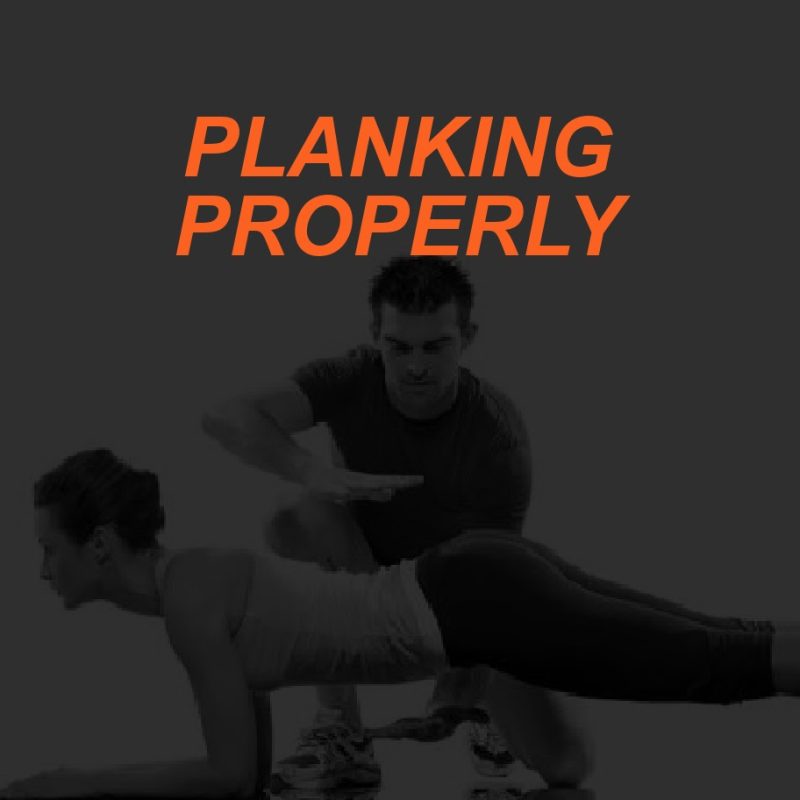
The plank is one of our most trusted tools in personal training for conditioning the muscles of the core. You can find multiple articles about its effectiveness within the NFPT blog. NFPT recommends using a variety of core exercises including “dynamic moves, (balance) and isometric exercises” in any well-rounded exercise program. But, like any effective and safe exercise program, a constant examination of new concepts and personalized adjustments must be applied.
New Concepts in Core Strength
The purpose of practicing exercises like the plank is, arguably, to help improve intervertebral stability, or the ability to limit movement of the spine, and lumbo-pelvic stability, limiting movement between the ribs and pelvis. Stuart McGill, PhD, an expert in core strength and back pain issues, suggests that planks should be held for a mere 10 seconds at a time.
This is contrary to what most of the industry has promoted over the past few decades, “Plank as long as you can, without losing form or feeling any back pain”. McGill also suggests that the flexors of the core, the rectus abdominis for example, are more often used to brace and stabilize the core, and therefore training them as such is an effective technique (as opposed to training them for spinal flexion only).
McGill and Lee also tested static strengthening protocols against dynamic core strengthening protocols in a study. They found that the isometric exercises helped to significantly improve core stability and reactive strength in both conditioned and non-conditioned subjects compared to no significant outcomes for dynamic training. Admittedly this points to the benefit of including isometric training like a plank into exercise programming. However, even McGill highlights the different factors and requirements between training to reduce injury and training for performance.
For instance, those with intrinsic core weakness, i.e., the inability to engage the musculature of the deep core often translate into compensation patterns resulting in back pain or injury. Muscles such as the transverse abdominis, the muscles of the pelvic floor, the diaphragm, and the multifidus create the inner-corset of the spine, providing stability to the individual segments of the spine. Many people are disconnected from these important structures, and their inability to fire properly will eventually contribute to injury, especially when “holding plank as long as possible” becomes the goal.
To properly train the core muscles, isometric holds work to improve endurance strength, which, given the need for the muscles of the spine to provide constant support to its stability, is paramount to develop before muscular strength and performance to reduce chances of injury.
It is therefore important to ensure that clients progress appropriately from core activation (if necessary), to deep core training, and finally core strengthening, where global exercises like spinal flexion and planking are empahsized.
Takeaways
De Blaiser et al, found in a study that shorter max plank and side plank hold times were correlative to various injuries in collegiate runners. However, in a later study, Luedke and Rauh had contradictive findings in similar athletes. Perhaps there is a diminishing return on the length of plank holds. Or perhaps the length of a plank and quality of musculoskeletal engagement are not mutually inherent in any one person or workout.
This means, per usual, the quality of an exercise is equally, if not more, important than quantity or speed, and certainly, should only be incorporated at the appropriate point in a client’s progression. Just because an individual can get in to a plank pose does not necessarily mean that they are ready to hold and maintain that position correctly. While designing your clients’ programs be sure to assess appropriately, progress skillfully, and prioritize the quality of their movements, increasing the likelihood of their continued success.







